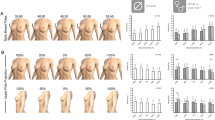Summary
Operatively removed gallstones were examined on their surfaces and in fractured cross sections by incident light microscopy and scanning electron microscopy. In addition, micro-bore samples and X-ray crystallography were done. Five gallstone types consisting of three basic structural layers are differentiable by incident light microscopy. The three layers consist of a central nucleus which is always present, a radially structured middle layer, and a fine crystalline outer shell, the presence or absence of the latter two layers differentiating the stone types. Two crystal structures could be differentiated by electron microscopy; a flat and a globular type. The nucleus is always of the globular crystalline type, while the outer layers are flat crystalline. From this we were lead to believe that the conditions in vivo, under which the different layers of a gallstone are built, change. The micro-bore samples lead us to believe that calcium is only secondarily layed down in the gallstone framework. White crystalline deposits, which were formed several seconds after fracture, were discovered on the fractured gallstone cross sections.
Zusammenfassung
Operativ entfernte Gallensteine wurden an Oberfläche und Bruchflächen im Auflichtmikroskop und im Rasterelektronenmikroskop untersucht. Ferner wurden Mikrosonden- und Röntgenfeinstrukturuntersuchungen durchgeführt. Auflichtmikroskopisch lassen sich fünf Gallensteintypen unterscheiden, die aus drei Strukturelementen zusammengesetzt sein können, nämlich einem Kern, einem radial-strahligem Mittelteil und einem feinkristallinem schaligen Randteil. Der Kern ist immer vorhanden, die beiden übrigen Bauelemente können fehlen. Elektronenmikroskopisch lassen sich zwei Strukturtypen unterscheiden, ein kristallin-plattiger und ein kristallin-knolliger. Das kristallin-knollige Element gehört immer dem Kern an. Die übrigen beiden Schichten sind kristallin-plattig aufgebaut. Daraus ergibt sich die Vermutung, daß die Bedingungen unter denen sich die verschiedenen Schichten eines Gallensteins in vivo bilden, zeitlich wechseln. Die Mikrosondenuntersuchungen lassen vermuten, daß das Element Calcium erst sekund→ in den Gallensteinen eingelagert wird. An Bruchflächen von Gallensteinen wurden weiße kristalline Ausscheidungen beobachtet, die sich wenige Sekunden nach dem Bruch bilden.
Similar content being viewed by others
Literatur
Sutor, D. J., Wooley, S. E.: The nature and incidence of gallstones containing calcium. Gut 14 215–220 (1973)
Sutor, D. J., Wooley, S. E.: The sequential deposition of crystalline material in gallstones: Evidence for changing gallbladder bile composition during the growth of some stones. Gut 15, 130–13 (1974)
Author information
Authors and Affiliations
Rights and permissions
About this article
Cite this article
Cesnik, H., Mitsche, R. & Strunzt, K. Untersuchungen an Oberflächen und Bruchflächen von Gallensteinen mit dem Licht- und Rasterelektronenmikroskop. Langenbecks Arch Chiv 343, 153–160 (1977). https://doi.org/10.1007/BF01262006
Received:
Issue Date:
DOI: https://doi.org/10.1007/BF01262006




